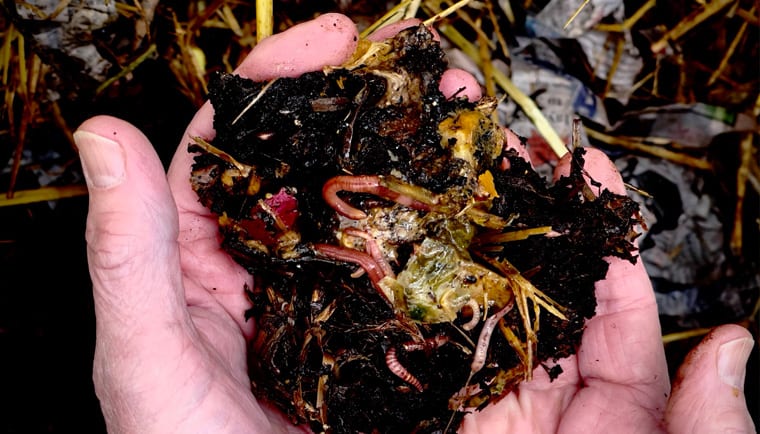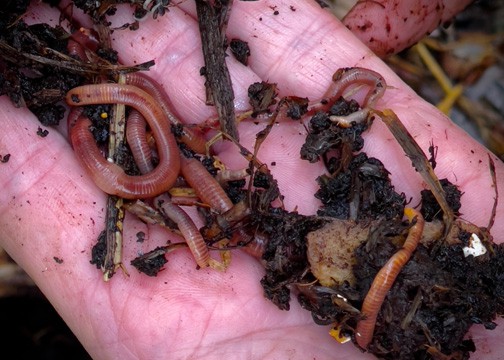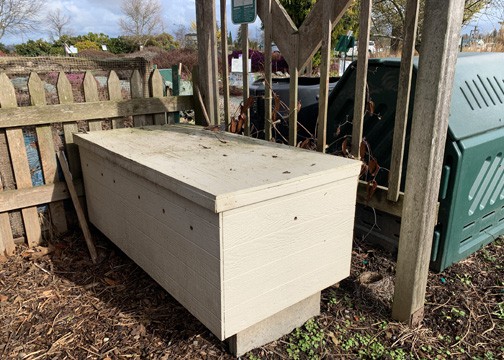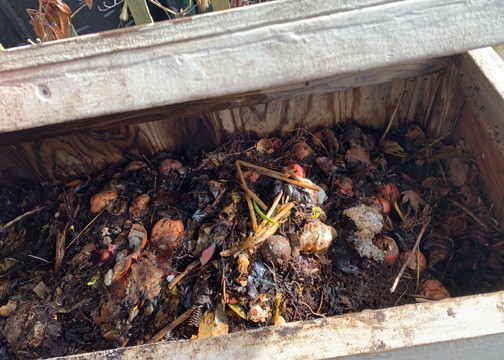

Stem the Landfill Tide with Vermicomposting
Convert Home Food Waste into an Organic, Nutrient Rich Soil Enhancement
Subscribe to the Blog >By Katryna Barber, Skagit County WSU Extension Master Gardener
This isn’t typically a welcome topic to bring up at a dinner party, but the quantity of food thrown into landfills in this country is horrifying. Food makes up about 24% of the material in landfills. And, wait for it… the biggest contributors to food waste in America are not farms or industry, but families. Yikes!

Katryna Barber
Everyday, nutritional trash gets mixed in with sofas, plastics, and other debris, and makes its way to a landfill where it is dumped in a huge, stinking pile. Once there, everything is compacted and eventually buried where it doesn’t get the air needed to break down organic waste. Without air under the pile of buried garbage organic waste produces methane–a major greenhouse gas. Some landfills burn off the methane before it explodes, creating a vicious cycle by producing carbon dioxide, another greenhouse gas. To read about how landfills work see the reference at the end of this article. It may encourage your composting efforts.
Growing food and getting it to market requires water, energy, fertilizer, and land. These resources are wasted when food ends up in a landfill. To combat the problem, the EPA and the FDA have created a program called U.S. 2030 Food Loss and Waste Reduction Goal. On a national level, these organizations are working to reduce food waste, food insecurity, wasted resources, and climate change.
If You Care About the Earth, You Can Also Do Something
Beyond buying ugly produce we can do our part to help reduce food waste and have fun doing it. By composting at home, either in a pile or with a worm bin, we can stop the cycle by feeding worms our food scraps and letting them convert them into high-quality nutrients that can be used by plants and other life forms that live in the soil.
A pound or two of red wigglers (or manure worms) will break down your food scraps and produce several buckets of worm castings (poop)– the black gold of garden additives. The castings don’t stink and are very nutritious for plants, creating a positive cycle of returning nutrients to the soil. It might feel small, but it is a win-win, leaving our soil in better shape, and reducing landfill waste–one banana peel at a time.

The red wigglers thrive near the soil surface, eating decaying organic material. Photo by Craig Barber / Skagit County WSU Extension Master Gardeners

The worm bin at the Discovery Garden sits outside year around, under the shade protection. Photo by Ginny Bode / Skagit County WSU Extension Master Gardeners

The worms are fed regularly with food scraps which include all types of vegetables, coffee grounds and filters, even pancakes and banana peals! Photo by Ginny Bode / Skagit County WSU Extension Master Gardeners
Getting Started
A quick Internet search leads to many websites and blogs about vermiculture, worms, and worm bins. Locally, good information can be found at Seattle Tilth and Whatcom.wsu.edu. (See references below.) Mary Appelhof’s book Worms Eat My Garbage, is an awesome and thorough guide.
Before Starting, Explore Your Options
Be realistic about your living situation and caring for your worm bin. Worms are living beings, doing great work. Find an accessible place to locate the worm bin, either inside or outside. They reproduce rather quickly, so make sure you can accommodate them with enough food and space. Be prepared to have a place for the worm castings, either in your garden, or to share.
Do You Have Enough Food Waste to Keep the Worms Happy?
A pound of worms needs about 1/2 pound of food scraps a day. If you don’t have a scrap jar in the kitchen already, start one and see how much accumulates. Perhaps you will need to supplement their food with scraps from other sources.
Note: Never put meat, dairy, or oils in a worm bin. Don’t put pet waste or pet litter in a worm bin, either. A small amount of pulverized eggshells, or a bit of soil for grit, is okay, but avoid putting citrus rind or onion in the worm bin-they don’t like it.
Setting Up Your Worm Bin
Locate a place for the worm bin and have it ready for the worms. Then get the red wigglers. You can buy them online, but it will be easier and less expensive to find someone locally who already has a worm bin. These little creatures populate quickly. They can live up to 3 years or more, so overpopulation can be a problem. It is recommended for a family of four to start with a pound of worms or about 1,000 worms.
The optimum temperature range for red wigglers is between 55° and 77° F. Air circulation and moisture are important, since worms breathe through their skin, and need moisture to do so. They need regular feeding, though, thankfully, red wigglers are fairly resilient. Once, when I neglected to feed them for several weeks, I still found living worms a few inches down as I turned my bin over! They weren’t pleased, but by replenishing the bedding, and feeding with new food scraps and coffee grounds they were soon thriving.
Red wigglers will die if you just let them go in the garden. Unlike their earthworm cousins who live deep in the soil, red wigglers eat the mold and bacteria that lives on rotting plant material, usually on or near the surface of the soil.
Harvesting the Rewards
If your bin is large enough, divide it in half and stop putting food on one side. Feed the other half. Allow 5 to 6 weeks for the worms to migrate to the feeding side. Scoop out the worm castings on the deserted side and lay it on a tarp. If you find worms just put them back in the new bedding. Pile it up and let the worms crawl into the deeper, darker part. Harvest the poop. Diminish the pile, spreading it out, leaving some in a hill for the worms to retreat to. Repeat as needed. Put the remaining worms and material back into the bin. Harvest the other side later as needed.
An alternate method is to dump the whole caboodle out on a large tarp. Harvest the same way as above. Be sure to have bedding and food ready to start their new home.
If you decide to start a worm bin, congratulations! You are keeping carbon-based organic materials (food, paper) out of a landfill, reducing greenhouse gases, improving the soil, and learning about caring for red wigglers. Happy vermicomposting!
REFERENCES:
https://science.howstuffworks.com/environmental/green-science/landfill.htm
Seattle Tilth Off the Shelf Worm Bin rev. 11/2012
https://tilthalliance.org/wp-content/uploads/2022/02/Final-Seattle-Tilth-Off-The-Shelf-Worm-Bin.pdf
Thurston County, Thurston County WSU Extension
https://s3.wp.wsu.edu/uploads/sites/2056/2018/10/Worm-Composting-Workshop-Handout-2018.pdf
Appelhof, Mary. Ed. 1997. Worms Eat My Garbage. 2nd Ed. Kalamazoo, Mich., USA Flower Press
Martin, Callie
https://skagitcounty.net/PublicWorksSolidWaste/Documents/
Food Scrap Composting Booklet.pdf
https://extension.wsu.edu/whatcom/hg/worm-composting/
ABOUT THE AUTHOR:
Katryna Barber is a Skagit County WSU Extension Master Gardener and is a team member of the composting program at the Discovery Garden.
Questions about home gardening or becoming a Master Gardener, may be directed to: WSU Skagit County Extension Office, 11768 Westar Lane, Suite A, Burlington, WA 98233; by phone: 360-428-4270; or via the website: www.skagit.wsu.edu/mg